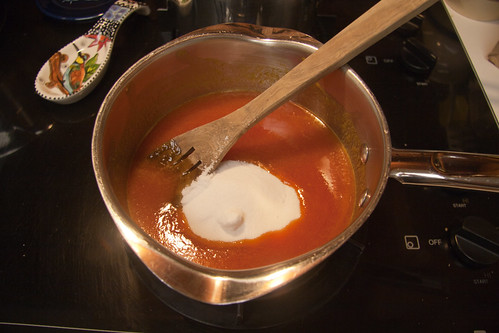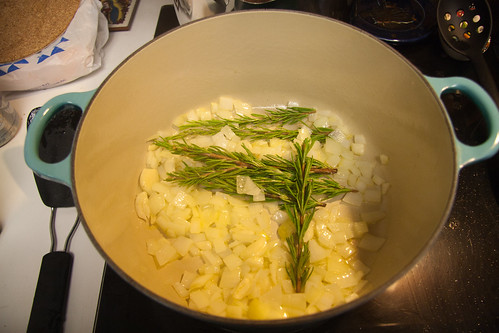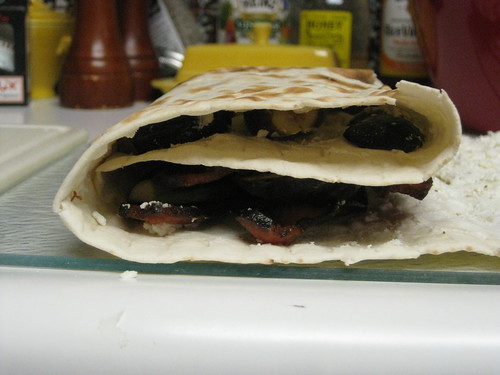“Gimme danger little stranger, and I’ll give you a thrill,” Iggy Pop sang, and he could well have been referring to the prickly pear, the fruit of cactus native to Mexico and the Western United States. Prickly pears, reddish ovoids that grow off the end of flat cactus pads, are dotted with tiny spines that easily become lodged in skin, leading to their foreboding name. Inside the unfriendly peel, the fruit is mildly sweet, with a flavor somewhat like kiwi, but less tart. I picked up six of the spiny fruits the Towani Organic Farm booth at the Farmers Market.

When I was a child, my grandmother had a collection of drinking glasses with images of cacti and a description of the prickly pear. They were actually old jelly jars, for what, I assume, is a long forgotten prickly pear jelly brand. Until recently, I had never noticed any prickly pear products and definitely had not seen the actual fruit for sale. I considered trying to make a jelly, but figuring that my collection of prickly pears was a bit small for a good batch of jelly—and noticing that many people liked the juice in cocktails—I decided that a prickly pear gomme syrup might be a better project.
I began by peeling the prickly pears, a process that involves slicing off both ends, then cutting a slit the length of the fruit and carefully peeling the skin back with a gloved hand.

After a little work, I had six peeled prickly pears ready to purée in the food processor.

I strained the purée through a mesh sieve, collecting the large, hard seeds. Six prickly pears yielded about a cup and a half of juice. I put the juice in a sauce pot and added a cup of sugar, bringing it slowly to a boil.

When the sugar dissolved and the syrup reached a boil, I reduced the heat and added some gum arabic powder. Gum arabic, which is easiest to find in the bulk section of health food stores, is an emulsifier that makes very silky syrups, typically called gomme syrup or just gomme. I stirred the simmering syrup continuously to dissolve the gum arabic, but foolishly used too much, which required extensive straining. Had I been more conservative with my measures, after about 5 minutes I would have had a smooth syrup with all the sugar and gum fully dissolved.
I strained the prickly pear gomme into a small jar and added a tablespoon of orange blossom water to round out the flavor. It’s very smooth, with a well balanced sweetness and fruitiness that can only be described as cactusy.
All the photos are here. A cocktail recipe will follow once I find something I like.
Prickly Pear Gomme Syrup
6 prickly pears
1 cup fine sugar
2 teaspoons gum arabic
1 tablespoon orange blossom water
Carefully peel prickly pears and purée in blender or food processor. Strain out seeds, and slowly heat purée with sugar in a small sauce pot. When mixture comes to a boil and sugar is fully dissolved, reduce heat and stir in gum arabic. Keep stirring until fully dissolved. Remove syrup from heat and let cool. Add orange blossom water and refrigerate. Syrup should keep two to four weeks.





























